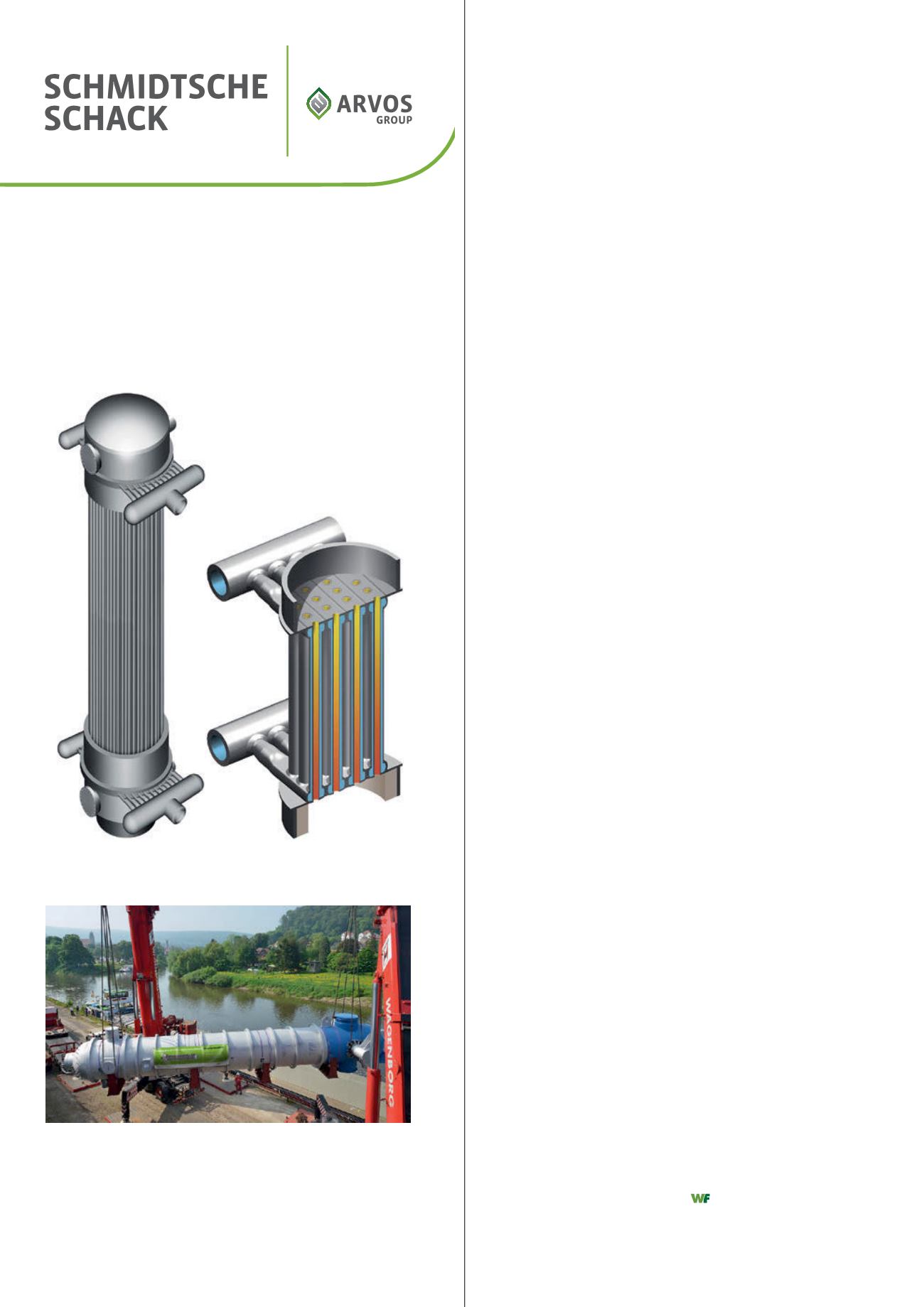
number, as well as tube pitch. Figure 5 shows the principal
impact of tube pitch on the critical heat flux for a given PGC
design. It can clearly be seen that a small tube pitch leads to a
critical heat flux, which is below the PGC heat flux – a result of
the thermal design. Such a design has a high risk of local dry out.
With increasing tube pitch, the critical heat flux also increases
and is higher than the PGC inlet heat flux. This chosen tube
pitch leads to reliable thermal design.
A second area of conflict refers to the ferrules, which are
installed at the tube inlet over a length that comprises the tube
sheet thickness and the tube inlet. The ferrules have a double
protection function. Firstly, ferrules reduce the heat input by the
process gas into the tube sheet and, secondly, they shift the
start of the steam production away from the backside of the
tube sheet. The ferrules have to resist the high process gas
temperatures and the fact that, for ammonia production, the
process gas atmosphere at high temperatures has a high
sensitivity for the metal dusting phenomenon (a special type of
corrosive attack). For that reason, nickel-based alloys are used as
material for the ferrules. This material is very expensive and
therefore a cost reduction measure is to decrease the length of
the ferrule. A shorter ferrule still reduces the temperature input
in the tube sheet but, with a shorter ferrule, the start of the
steam production is closer to the tube sheet. The designer has
to take care so that the steam flowing upwards to the highest
point of the shell can be safely discharged through the first riser
nozzle. To ensure this with a shorter ferrule, the first riser nozzle
has to be positioned closer to the tube sheet. The position of
the nozzle has mechanical and code relevant constraints. The
determining factor is the minimum allowable distance between
the nozzle and the connecting weld of tube sheet and shell. This
allowable distance can be in conflict with the required distance
to ensure a proper steam discharge without the risk of steam
blanketing.
The above discussed situations become more serious when a
thin tube sheet with stiffeners is applied. Since the stiffener
plates are welded perpendicular onto the backside of the tube
sheet and are between the tube rows, the available tube-to-tube
space is reduced by the stiffener plate thickness. Consequently,
the available water volume around the tubes decreases and the
risk of steam bubble accumulation and local dry out increases.
This is intensified when short ferrules are installed and the start
of steam production is in the area of the stiffener plates. To
mitigate the risk of local dry out, the corrective action is to
further increase the tube pitch, which enlarges the tube sheet
diameter and thereby the area where pressure forces by the
media are applied. This leads to a higher mechanical loading by
pressure forces of the stiffened tube sheet compared to a
flexible tube sheet design.
Conclusion
The preceding discussed two examples clearly show the
interaction of design variables and the consequence of the
chosen tube sheet design. ARVOS | SCHMIDTSCHE SCHACK is
applying the flexible tube sheet design combined with its own
technology features. For extreme process conditions and
requirements, a super flexible tube sheet design (SUPLEX®tube
sheet) was developed and successfully applied in process gas
coolers. Based on major design experience for more than
30 years, the company's fleet with flexible tube sheet comprises
a total of 10 million operating hours.
Schmidtsche
®
Steam Superheater
IMPROVE THE RELIABILITY
OF YOUR AMMONIA PLANT
WITH SCHMIDTSCHE
®
VERTICAL PROCESS GAS COOLERS
AND STEAM SUPERHEATERS
Double Tube /
Oval Header System
Vertical Process
Gas Cooler
ARVOS GmbH
SCHMIDTSCHE SCHACK
Ellenbacher Straße |
Kassel | Germany
Phone: + ( )
-
Schmidtsche
®
Design Principle


